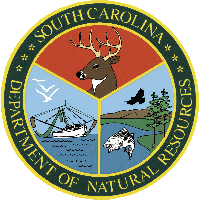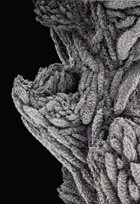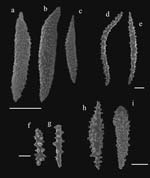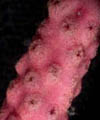CONTENTS
Introduction
The South Atlantic Bight
Methods
Octocoral Morphology
Glossary
Gorgonacean
Bauplan
Key to the Families of Octocorals in the South Atlantic Bight
Key to the Species of
Clavulariidae
Anthothelidae
Plexauridae
Gorgoniidae
Virgulariidae
Notes on the Species
Carijoa
riisei
Scleranthelia
rugosa
Telesto fruticulosa
Telesto nelleae
Telesto sanguinea
Bellonella rubistella
Pseudodrifa nigra
Nidalia occidentalis
Iciligorgia schrammi
Diodogorgia
nodulifera
Titanideum
frauenfeldii
Muricea pendula
Thesea nivea
Bebryce grandis
Bebryce parastellata
Scleracis guadalupensis
Placogorgia sp.
Leptogorgia hebes
Leptogorgia punicea
Leptogorgia
cardinalis
Leptogorgia virgulata
Leptogorgia setacea
Leptogorgia euryale
Ctenocella (Ellisella)
barbadensis
Renilla reniformis
Sclerobelemnon
theseus
Stylatula elegans
Virgularia presbytes
| Subclass
OCTOCORALLIA (=ALCYONARIA)
Order GORGONACEA Suborder Holaxonia Octocorals with unspiculated axis and often a soft,
chambered central core. Family Plexauridae Members of the families Paramuriceidae and Muriceidae
were reclassified in Bayer 1981 to be included in the Plexauridae.
Members of this family occurring in the SAB have an unspiculated,
horny axis and a hollow, axial core that is surrounded by a loculated
cortex. Generally the calyces have a strong armature of sclerites.
|
|
Key to the species of Plexauridae in the shallow
(to 200m) South Atlantic Bight |
|
|
3a. – Calyces appearing spiny or shelf-like; calyx with a strong armature of large (often >1 mm) orange spindles that extend past its edge when polyp is retracted. Coenenchyme contains spindles only
|
3b. – Calyces conical or domelike; no large sclerites extending from edge of calyx. Coenenchyme with small colorless spindles, double heads, double cones (but see exception in Remarks on species) |
 |



